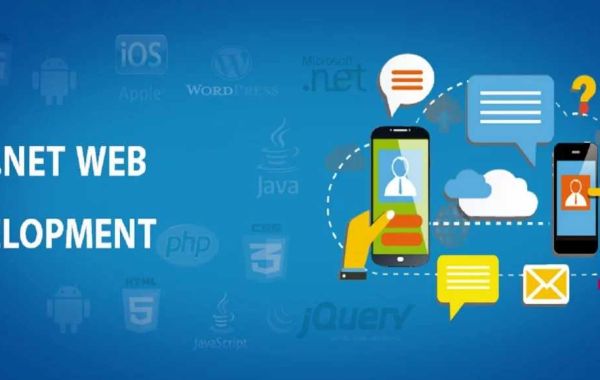Mastering Continuous Integration and Deployment: A .Net User's Guide In the rapidly evolving landscape of software development, Continuous Integration (CI) and Continuous Deployment (CD) have emerged as crucial practices for achieving efficiency and quality. For .NET developers, mastering these practices is essential to stay competitive and deliver value consistently. This guide dives deep into the world of CI/CD in .NET projects, offering insights, best practices, and practical solutions to common challenges.
Understanding the Core Concepts of CI/CD in .NET
Continuous Integration (CI) and Continuous Deployment (CD) are important for .NET projects. CI means joining together code changes from different people into one project often. This should happen a few times each day. CI helps quickly find and fix errors when joining code. This makes developing software easier. CD is when new software changes are put into use fast. Together, CI and CD help make .NET software development better, more consistent, and let teams get new software to people quickly.
In a similar way, CD goes beyond CI by automatically giving applications to special computing environments. This helps ensure the software can be shared reliably at any time. The automation covers all parts of the process from the first code added to the last deployment. It makes the whole process smooth.
For people who make apps with .NET, it can be hard to use CI/CD the right way. You need to know a lot about .NET and the tools that help with automation. Good CI/CD works when these tools are used to make workflows. Workflows automatically build apps and test them. They also carefully put apps onto different systems. Making workflows this way is important. It speeds up how often new versions can come out. It helps teams work better together. And it lowers mistakes people make themselves. This helps .NET projects do very well and make better quality products.
Setting Up a Continuous Integration Pipeline for .NET Projects
Setting up a good Continuous Integration (CI) system is very important for .NET projects. It helps teams work better and faster. The first step is choosing a CI server that works well with .NET. Jenkins, TeamCity, and Azure DevOps are great because they connect easily to .NET programs. They can automate building the software in a smooth way. This gives projects a strong base to help make and test new code.
At first, the CI server is connected to the place where the code is saved like GitHub or Bitbucket. This lets the CI server build the code automatically every time changes are added. It can also put back any NuGet packages. NuGet packages help with .NET libraries and tools. The CI server uses MSBuild to compile the .NET solution. MSBuild is the thing that builds .NET code.
Testing each small part of the program is very important. Using NUnit or xUnit helps test make sure your program works right without mistakes. Using SonarQube also makes the code even better. It looks at every line of code to find ways to make it better and make sure best rules are followed.
This setup makes it easy to automatically compile and test your .NET projects in a certain order. It helps make sure any code added is error-free. This is important for software development today where things change quickly. The process becomes simple with fewer mistakes. This is vital for keeping up with today's fast software development.
Good To Read:- What is .NET Core and Everything You Need to Know About it
Automating Deployment with Continuous Delivery for .NET
When making .NET programs, it is important to easily move from testing to using without problems. This needs a good way to constantly give (.NET programs). Making .NET programs work on different servers, from ones at work to cloud servers, needs a strong plan to do it by itself. Using tools like Octopus Deploy and Azure DevOps is important. They help make the path from writing code to using it easy. This lets code easily go from where it is saved to servers people use.
The most important part of making deployments automatic is carefully defining the steps for deployment to different places - like testing, staging, or production. Here, using Infrastructure as Code practices is very helpful. By using tools like Terraform or ARM templates, .NET programmers can set up and manage infrastructure automatically, making sure everything is consistent and mistakes-free everywhere.
This trip to automatically put .NET projects in place is not just about putting the program in place by itself. It is also important to carefully deal with settings and private details. Using things like files with settings for each place and safe secret management helps keep things running right and secure no matter where the program is put.
Using these methods for automatically putting apps into use within the steps for making apps helps the .NET apps be delivered faster and better. It also makes the base stronger for making apps in a way that can deal with changes and quickly make new things.
Best Practices for CI/CD in .NET Projects
It is very important for people using hard ways to build and test .NET projects to follow good rules. One important rule is to always use a version control system. This system keeps track of every part of the project, like program code, database rules, and settings. It lets people work together better and easily go back to earlier versions if needed. Version control gives a strong base for teamwork and fixes if something goes wrong.
Choosing a good branching plan that fits how your team works and what you are making helps merge code and updates go smoothly. This plan should go with always using machines to do builds, tests, and deployments. Automation can stop people from making mistakes and speed up getting code to users. It helps continuous delivery work well.
The main rule of same environments is very important. It says that development, testing, practice, and production places should work the same way. If they work the same way, it means problems like "it works on my computer" will not happen as much. It also means the software will act the same no matter where it is.
It is important to always watch what the program is doing. Recording what happens can help find and fix problems fast. This keeps the app working well on different computers. If we follow these good rules, .NET projects can make the CI/CD process smoother, better, and with fewer mistakes. They will set a high standard for making software.
Must Read:- Why Progressive Web Apps Are Becoming the Future of Web Development?
Common Challenges and Solutions in .NET CI/CD Implementation
Doing CI/CD for .NET programs is hard. There are many tricky problems to solve. One big problem is managing all the things a program needs to work. .NET programs often need other programs. This can make CI/CD messy. Using Docker can help. Docker lets you put the whole program and everything it needs into a container. The container packs everything up so it is easy to move around. This makes the CI/CD steps simpler.
Changing the database can be difficult. Changes to the database could cause problems like losing data or stopping the system from working. Tools like Entity Framework Migrations help change the database in a safe way. They give steps to follow so the database can improve without issues as code is added. This helps the database evolve well as part of the continuous integration and continuous delivery steps.
It can be very hard to keep settings the same across different programs and computers. The best way to do this is to use environment variables together with good secret keeping tools. These things help manage settings in a safe and automatic way. They make sure all the settings are the same. This lowers mistakes by people.
These problems, while hard, are not impossible to solve. With the right things and plans, computer people can get past these blocks, making their .NET CI/CD pipes stronger and better at work. Using these answers does not just fix today's problems but also makes a future way of doing things that works better with fewer mistakes.
Leveraging Azure DevOps for .NET CI/CD
Azure DevOps is very good at helping make a CI/CD environment that works for .NET apps. It has many tools that let developers make their software delivery faster. Azure Repos is used to store code in the cloud. This makes the code easy to work on and share. Azure Pipelines is also part of Azure DevOps. It helps build, test, and deploy code automatically. This moves code from writing it to sharing it with users quickly. Azure Artifacts store packages and things the code needs. Teams can share and use these between projects.
Using Azure DevOps with .NET projects can do more than just automate boring tasks. It helps people work together better, makes code better, and gets products to customers faster. The platform links well with other Azure services like Azure App Service for hosting websites and apps. And it links with Azure Monitor for information. This makes everything work better together in one system. Developers can use all the best parts of Azure DevOps for .NET projects. Their code will be written, tested, and sent to customers in a very careful and quick way.
Don't Wait, Hire .NET Core Developers Now - Discuss Your Project Requirements
The Future of CI/CD in .NET Development
As .NET development keeps changing, the way of Continuous Integration and Continuous Deployment (CI/CD) is headed to using new technologies and methods to make things better and safer. Mixing artificial intelligence (AI) and machine learning (ML) into the steps of CI/CD can change everything, offering a way to see into code quality, automated code reviews, and smart testing plans that can largely cut back on work people need to do and be more correct in finding possible problems.
In addition, DevSecOps is becoming more connected to CI/CD practices. This makes security measures more important early on and all through the software making process. This change allows .NET developers to use tools and ways of doing things that find security problems early, making sure security is a very important part of making software from the beginning instead of something added later.
In addition, the growing use of microservices in .NET programs means a big change in how CI/CD pipelines are made and used. This way of building promotes making small and separate programs that can be updated and delivered separately. This allows for smaller changes and faster ways to give updates. Because of this, CI/CD pipelines need to change to handle many programs that may depend on each other, needing better ways to work together and better ways to deploy programs to keep everything working right and reliable.
These changing ways show a coming time when CI/CD helps make .NET programs better and faster. It also protects the programs from new cyber dangers. Tech and ideas change all the time. CI/CD in .NET development makes software stronger against the new risks.








